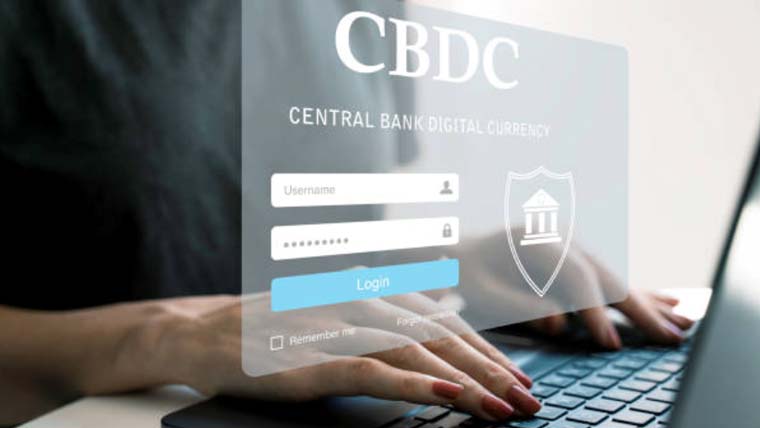Guest contribution by Adriano Lombardo*
Digital central bank money (CBDC), “stable coins” or 100% backed private currencies, which will prevail?
While CBDCs are controlled and regulated by government institutions, stablecoins offer supposed stability by being tied to majority government bonds and other assets. The concept of 100% backed private currencies promises to re-establish an anchor to the real economy and thereby create long-term value preservation. The answer to the question of which model will reach the mass market and achieve widespread adoption will shape the future of the financial system and will have a decisive impact on the global economy.
Fully backed money has a long history
Irving Fisher was an American economist who lived in the late 19th and early 20th century. He was known for his work in monetary economics and financial theory. Irving Fisher and other influential University of Chicago economists were proponents of 100% backed currencies – a monetary reform idea that would require banks to keep deposits equal to their actual cash reserves. Under this model, commercial banks would always remain liquid, inflation and deflation or economic depressions and much of the public debt would be avoided. This is reminiscent of the national referendum held on June 10, 2018 on “crisis-proof money: money creation by the National Bank alone”, which was rejected by Swiss voters, with over 75% voting against the initiative. The voter turnout was only 34%. However, the rejection of this initiative in Switzerland shows that the implementation of this monetary reform idea was met with considerable resistance. But could the use of blockchain technology make a difference in the viability and public acceptance of a “100% backed money” banking system in the future?
FIAT money – money created out of nothing
The financial system as we know it today is based on the concept of fiat money – a currency accepted by government authorities as legal tender. Fiat money therefore has no intrinsic value; it only carries the promise of being valid as a means of payment. A fascinating feature of fiat money is the fact that it appears to be created out of thin air. The question of how this money is created and what impact it has on the economy and society is raised again and again. In this context, it is of great importance to take a look at the mechanisms of money creation and the possible consequences of this practice.

To better understand the evolution of today’s fiat money system, it is worth looking at the historical example of goldsmith bankers. Goldsmiths acted as banks and kept accounts of gold deposited by savers. When a saver deposited 200 gold ounces with a goldsmith, he received 200 goldsmith receipts or notes that were 100% backed by the gold ounces. These “Goldsmith Notes” could be exchanged for the deposited gold ounces at any time. Next on the scene is a borrower who borrows 100 Goldsmith Notes from the bank and uses them to pay the builder for his house. This increases the bank’s assets by 100 Goldsmith Notes. A balance sheet expansion, not covered by gold ounces, is created, and the goldsmith’s accounting is transformed from custody of gold ounces to lending.
The example of the goldsmiths and their notes can be compared to today’s fiat money system. In both cases, money is based on trust, stability and acceptance. Goldsmith notes were supposedly backed by physical gold, while fiat money is based on reliance on the government payment system and the currency, but the majority is not backed by physical assets.
In practice, it has been shown that the fiat monetary system is often sustained by ever-increasing debt. Government institutions resort to measures such as credit expansion and quantitative easing programs to provide liquidity and keep the system stable. However, there are dangers to this approach, such as inflation and rising debt.
Why has the fiat system remained unchanged?
The fiat system might come with a promise of seemingly unstoppable growth and prosperity, but at the same time it harbors the very real risk of abrupt financial collapse, while it had to be kept artificially alive in recent years by ultra-expansive monetary policy. On what grounds can such a monetary system possibly be justified?
Put simply, the existing financial system is too lucrative for too many global influencers to let it fall. Imagine being able to print your own money, lend it out almost at will and claim interest on it, or invest it under favorable conditions, with barely any restrictions? In a multipolar world, this system serves to exert political power and to finance one’s own interests. It is unthinkable that, for example, the U.S., the FED and their member banks or investment companies would easily abandon this system. During financial crises, “Lenders of Last Resort”, i.e. national banks and their owners, receive at the end at least the assets, which they had financed with “money out of nothing”: “The bank never loses!”
Thus one of the most important problems of our time remains swept under the carpet, although it threatens our whole existence and the future of the global economy. Even auto pioneer Henry Ford knew this some 100 years ago, saying, It is well enough that people of the nation do not understand our banking and monetary system, for if they did, I believe there would be a revolution before tomorrow morning. What are the lessons from history?
SNB Plans CBDC Pilot: Wholesale Integration of Central Bank Digital Currency – A Look at the Future of Fiat Money
A CBDC is central bank money based on distributed ledger technology (DLT). Several central banks already have plans to bring such CBDCs to market. The Swiss National Bank (SNB) is showing a strong interest in researching and implementing a digital central bank currency (CBDC), according to “Project Helvetia Phase II,” which explores the settlement of tokenized assets in digital central bank currency for financial institutions (wholesale CBDC). This joint experiment by the SNB, the Bank for International Settlements (BIS) and SIX is not just a theoretical experiment, but aims to test real transactions with market participants.
The SNB plans to issue the Wholesale CBDC via the digital exchange of the Swiss stock exchange SIX. The project will be implemented for a limited time for the time being. At the same time, we can see that central banks around the world are working on the development of digital currencies, as is the European Commission with its project for a digital euro and other initiatives. The BIS Innovation Hub develops public goods in the technology sector to support central banks and improve the function of the financial system. The SNB is using the BIS Innovation Hub to test different approaches to integrating CBDCs into the financial market infrastructure, including Retail CBDC, which is issued directly to end users, and Wholesale CBDC, which is targeted at financial institutions. The results show that both approaches are legally feasible, and the SNB could theoretically test other innovative approaches to payments. Overall, this suggests that the SNB is aiming for a symbiosis of different CBDC models to explore the possibilities of this new technology in the financial industry and to exploit the potential of digital currency in payment transactions between banks and market participants. It should be noted that CBDCs could trigger an evolution of the existing fiat money system and of the role of central banks in the financial world, while challenges related to transparency and security would also need to be considered.
With the establishment of the BIS Innovation Hub, there is an opportunity for the SNB to test other theories and approaches that have been repeatedly suppressed by national banks and policymakers in the past, even though they have shown initial economic success. Whether under centralized or decentralized systems, new technologies could make room for new, more diverse, and less expensive solutions that could mitigate the risk of a single entity (monopoly and technology).
Could the “CBDC” make 100% backed money socially acceptable?
Yes, if you have, for instance, digital central bank money (retail CBDC) directly from the central bank rather than entrusting it to a commercial bank. This could provide additional security, as it is not affected by the risks that may be associated with traditional bank accounts at commercial banks.
Your digital central bank money would then be held by the central bank and should not be lost unless of course special circumstances arise (see next section). Moreover, if the central bank offers the possibility to exchange digital central bank money into coins and notes, this could be an additional hedge, as you would have physical cash as a reserve option.
In this case, you would indeed be independent from the risks of bank insolvency or possible bankruptcy of commercial banks, since the central bank is an independent institution and normally cannot go bankrupt. In fact, this is comparable to the idea of 100% backed money, since your money would be issued directly by the central bank and thus has a direct equivalent in the central bank’s reserves, without depending on loans from commercial banks.
However, it is important to note that the implementation of CBDCs may vary by country and central bank, and the exact terms and options for exchanging digital money for physical money will depend on the policies in place.
100% secure?
It is important to understand that there is no such thing as 100% security when it comes to financial instruments such as CBDCs, DLTs, SWIFT, tokens, stable coins, and bank accounts. Each of these instruments is exposed to various risks.
When CBDCs are introduced, there is a risk that other central banks could introduce similar digital currencies, which could lead to competition and uncertainty about the stability and control of CBDCs.
Technical failures, security breaches, misconduct, and regulatory changes are other potential threats that could jeopardize the security of these financial instruments.
Advanced technologies such as quantum computing and artificial intelligence pose a threat to the cryptographic security of digital tokens on the blockchain.
Digital tokens and traditional bank accounts are vulnerable to attacks on their networks and platforms, which can lead to security breaches and private key theft.
It is imperative that platforms and institutions implement best security practices and make users aware of potential risks to increase the robustness of their financial instruments. However, despite all precautions, there can be no absolute guarantee of safety.
Power shortages pose another potential security risk, as they can affect the availability and reliability of financial systems.
A comprehensive analysis of the security aspects and the implementation of appropriate security measures are necessary to minimize potential threats and to increase user confidence in the security and reliability of these financial instruments. Nevertheless, it should be clear that absolute security in this area is not realistic.
Realunit =100% backed
The equation “Realunit =100% backed” takes into account that the investment company RealUnit Schweiz AG has no debt and has invested the majority of its share capital in tangible assets, including physical precious metals such as gold and silver, as well as crisis-resistant corporate investments and liquid assets (see also https://realunit.ch/maslow/). The RealUnit share and the RealUnit token of equal value can be considered a fundamentally stable-value investment, since they are backed by these real tangible assets and cannot be multiplied at will, as is the case with the fiat money system. In contrast to Stable Coins, RealUnit Schweiz AG does not invest in sovereign debt but mainly in scarce tangible assets. This increases crisis resistance and long-term value retention.
To increase security, it is essential that platforms and institutions implement best security practices and make users aware of potential risks. Self-custody and management of financial instruments requires a comprehensive understanding of security issues. Here, the RealUnit token offers an innovative recovery function, where even if you lose the access key to your wallet, you will get it back after the successful completion of the process.
CBDC, Stable Coins or 100% backed private money, which will prevail?
In China, about 1/5 of the population had an e-CNY account as of the end of 2021 (Retail CBDC), indicating some level of acceptance and use of digital central bank money, despite the risk of being linked to the “social scoring system.” The central bank could directly access the wallet of individuals and companies at the push of a button. The fact that e-CNY money in circulation accounts for only 0.13% of all transactions could be related to uncertainty. It is becoming clear that the acceptance and use of CBDCs has its fair share of challenges and dangers.
At the same time, the number of cryptocurrencies has continued to grow since 2021, and today there are said to be about 10,000 different crypto-tokens on the market. In this growing ecosystem, stablecoins play an important role as they are expected to provide price stability, unlike the volatile fluctuations of many other cryptocurrencies. An interesting example is the RealUnit share token, which could bring confidence and stability. It is possible that CBDCs could, eventually, replace Stable Coins.
The spread and acceptance of digital currencies depends on a variety of factors, including policy decisions, regulatory frameworks, technological advances, and acceptance by the general public. In China, the e-CNY may have gained some traction, but its contribution to total money in circulation is still modest compared to other payment methods such as Alipay.
It is difficult to predict which model will ultimately prevail. The evolution of the digital currency landscape is dynamic and can change significantly over time. Different models could coexist in different regions and application areas.
In this context, the RealUnit share token could have a competitive advantage due to its tangibility and transparency. The fact that it is 100% backed could boost user confidence. Its backing, with mostly real assets like gold or silver and the performance of the token depending on the performance of said real assets, seems to be attractive for many investors to protect their assets from a loss of purchasing power.
Trust is undoubtedly one of the most important features of a successful “currency”. A transparent and accountable system that allows users to understand the underlying assets and security of their digital funds can be a critical factor in driving adoption and use of a particular currency model.
It will be interesting to see how the RealUnit token and other innovative models in the digital currency world evolve and how they will impact the global financial landscape.
The future of digital currencies remains exciting and uncertain, but it is clear that transparency, security (legal and technological), and trust will be key factors in determining the success of individual currency models.
* About Adriano Lombardo:
As a private person, business economist and vocational school teacher (general education, economics + law), the world of economics has always interested me. As part of a continuing education program, I will link economic concepts and theories, based on the fundamentals of the various framework and school curricula, with the business case of RealUnit Schweiz AG (RealUnit) in Baar. RealUnit is free to publish my content. I assume no liability for activities of third parties based on my deductions. If you are interested in making your business model available for teaching purposes, please contact me (adriano.lombardo@bbzsogr.ch). In the future, education must focus even more on practice – and vice versa. I generally prefer projects on which the students can work over a longer period of time in a subject-oriented and case-specific way and from which they can benefit as a result.
** The contents of this article represent the personal views of the author only and not necessarily those of RealUnit Schweiz AG. The quality (financial statements, market positions, etc.) and competitiveness (future) of the investment positions, taking into account possible threats and opportunities (external factors), have not been examined.



